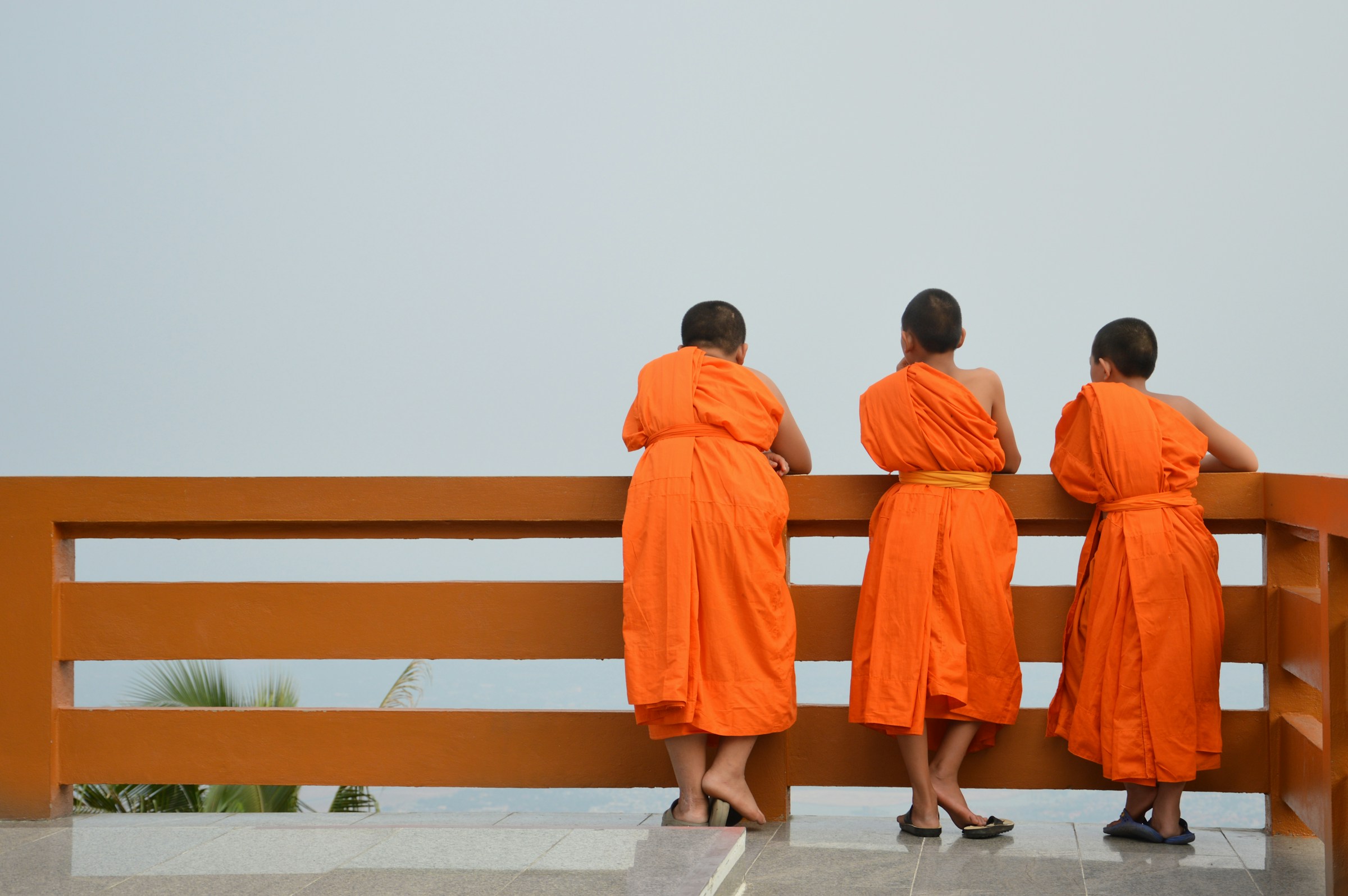Step into any major city in China, and you can’t walk ten blocks without stumbling upon it. Maybe it’s the faint scent of sandalwood incense drifting from a hidden temple gate. Maybe it’s an old woman on the bus quietly thumbing a string of prayer beads. Or maybe it’s just the word 缘分 (yuánfèn) casually dropped into a conversation about meeting a new friend, implying a destiny woven long ago.
This is Buddhism in China. It’s not just a religion you find in monasteries; it’s an invisible thread woven deep into the brocade of Chinese culture. When Buddhism first arrived from India via the Silk Road some 2,000 years ago, it was a truly foreign concept. China already had its own powerful homegrown philosophical systems: Confucianism for social order and Taoism for harmony with nature.
Buddhism was the outsider, the new kid in school. But instead of being rejected, it performed one of the greatest cultural mergers in history. It didn’t just survive; it thrived, adapted, and fundamentally changed what it means to be Chinese.
You’re Speaking Buddhist and You Don’t Even Know It
One of the most profound influences is on the very words people speak every day. Many concepts we take for granted in Mandarin didn’t exist until Buddhist monks needed to translate complex Sanskrit sutras. They had to invent or repurpose words, and these words stuck.
Here are a few you’ll hear constantly:
| Chinese Word | Pinyin | Literal Meaning | The Buddhist Connection |
| 世界 | Shìjiè | World | Before Buddhism, Chinese terms for “the world” were more terrestrial, like 天下 (tiānxià – “all under heaven”). Shìjiè comes from a Buddhist term for the different realms of existence and time, a much bigger, cosmic concept. |
| 因果 | Yīnguǒ | Cause and Effect | This is pure, unadulterated karma. The idea that every action has a consequence that will come back to you is now a cornerstone of Chinese moral thinking, whether you’re religious or not. |
| 缘分 | Yuánfèn | Predestined Affinity | That magical, untranslatable feeling that connects two people (as friends, lovers, or even rivals). It’s the Buddhist idea that relationships are dictated by karmic ties from past lives. It’s the ultimate excuse for everything from a breakup to a lifelong friendship. |
| 功夫 | Gōngfu | Skill / Effort | Okay, this one’s a bit of a pop culture mix-up, but the link is real! Gongfu means hard-won skill. The term became globally famous through the martial arts of the Shaolin Temple (少林寺 – Shàolín Sì), the legendary birthplace of Chan (Zen) Buddhism, where physical discipline was a path to enlightenment. |
The Face of China: Art, Architecture, and a Goddess of Mercy
Walk away from the glass-and-steel skyscrapers, and you’ll see Buddhism’s footprint everywhere.
-
Pagodas: Those elegant, tiered towers that are icons of East Asia? They are the Chinese adaptation of the Indian Buddhist stupa, a structure originally meant to house sacred relics. The Chinese took the basic idea and ran with it, creating the graceful architectural style we see today.
-
The Big Buddhas: From the towering Leshan Giant Buddha carved into a cliffside to the serene grottos of Longmen and Yungang, Buddhist art introduced a new scale and spirit. It brought a focus on the divine and the transcendent that complemented Taoism’s love of nature and Confucianism’s focus on human society.
-
The Goddess of Mercy, Guan Yin (观音): This is the ultimate story of adaptation. Guan Yin is arguably the most beloved deity in China. But here’s the twist: she started as a he. In India, the original figure was Avalokiteshvara, a male Bodhisattva. As Buddhism moved to China, it recognized a need for a more maternal, compassionate figure. Over centuries, Avalokiteshvara underwent a gender transformation, becoming the gentle, graceful goddess Guan Yin, a figure to whom millions pray for comfort, safety, and even children. She is the perfect example of Buddhism putting on a Chinese face.

From Rituals to Tofu: The Buddhist Lifestyle
Buddhism’s influence seeps into the routines of daily life, often blending with folk traditions so seamlessly that people forget the source.
-
Temple Visits: For many, visiting a temple isn’t a somber religious duty. It’s a pragmatic act. Students flock to temples to pray for good scores on the dreaded gaokao (college entrance exam). Business owners light incense to pray for good fortune. It’s a blend of spiritual belief and practical hope.
-
Vegetarianism (素食 – Sùshí): The Buddhist principle of non-harming (ahimsa) introduced a strong tradition of vegetarianism. This is why you’ll find incredible vegetarian restaurants all over China, especially near temples, serving up mind-blowing “mock meats” made from tofu, seitan, and mushrooms.
-
Funerals and Ancestors: While ancestor worship predates Buddhism, Buddhist ideas about reincarnation and the afterlife merged with existing traditions. The burning of joss paper (“spirit money”) and other offerings is a hybrid ritual designed to ensure the deceased has a comfortable journey in the next realm.
The Great Remix: The Rise of Chan (Zen)
Perhaps the most “Chinese” version of Buddhism is Chan (禅), which later traveled to Japan and became known as Zen. Chan was the result of Buddhist teachings being filtered through a Taoist lens. It stripped away a lot of the dogma and ritual, emphasizing meditation and direct, personal enlightenment.
This was the Buddhism that gave us the Shaolin Temple’s warrior monks, the enigmatic poetry of enlightened masters, and the minimalist aesthetic that values emptiness as much as form. It was Buddhism, but with Chinese characteristics.
So, the next time you’re in China, look closer. The path of the Buddha isn’t just a historical relic; it’s a living, breathing part of the culture. It’s in the food, the art, the language, and the fundamental belief that all things are connected. It’s not a foreign faith anymore; it’s part of the family.
